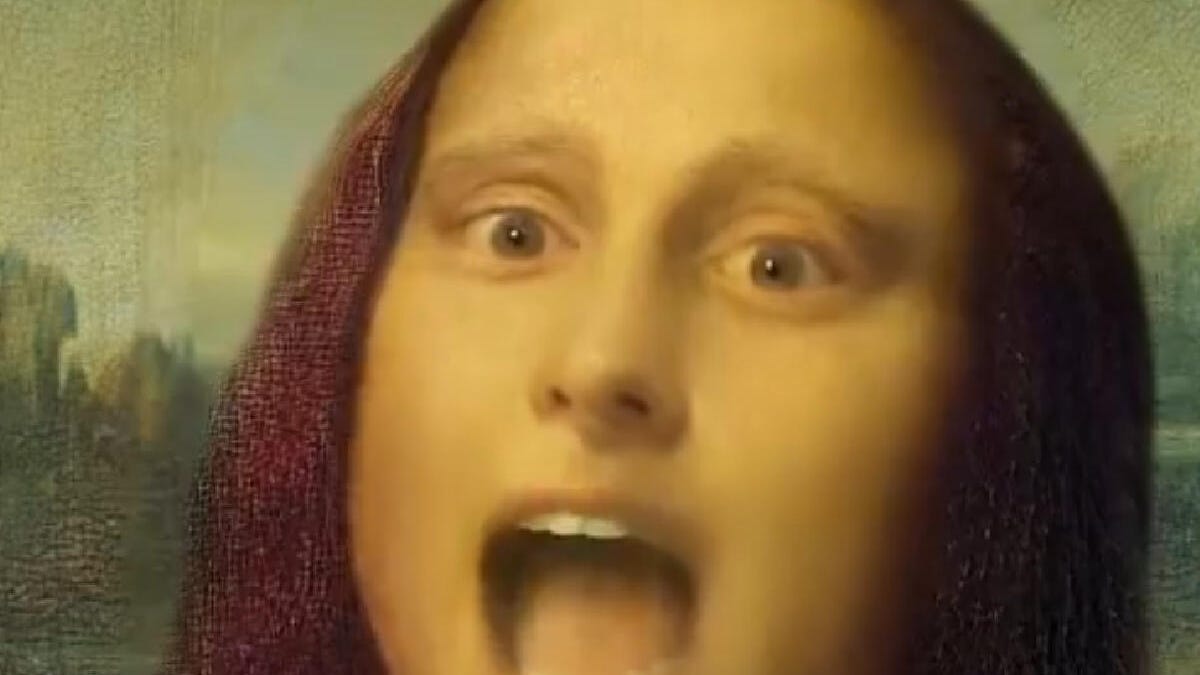
There are many enduring mysteries to the human condition: Why are we here? Who made the universe? And, most importantly, could the Mona Lisa rap?
Microsoft has announced a new artificial intelligence technology called VASA-1, which can turn a photo of someone’s face and a short clip of their voice into a lifelike computer-powered video. And thanks to this breakthrough, the company was able to create a lifelike video of Leonardo da Vinci’s famed painting, the Mona Lisa, performing actress Anne Hathaway’s viral 2011 rap, Paparazzi.
Microsoft just dropped VASA-1.
This AI can make single image sing and talk from audio reference expressively. Similar to EMO from Alibaba
10 wild examples:
1. Mona Lisa rapping Paparazzi pic.twitter.com/LSGF3mMVnD— Min Choi (@minchoi) April 18, 2024
Microsoft’s video is the latest example of the rapid advances that tech companies are making with AI tools, though a rapping Mona Lisa arguably straddles the line between quirky and creepy.
The software giant’s new technology is far from the only use of AI to interpret and experience art, or the broader world of media. Microsoft partner startup OpenAI, for instance, has created similarly eye-catching videos through its text-to-video model, Sora, which can create ultra-realistic videos from text prompts. Google has a similar tool called Lumiere.
Those tools are in limited availability. As for AI tools you can use every day, be sure to check out CNET’s hands-on reviews of the image generators in Adobe Firefly, OpenAI’s Dall-E 3 and Google’s ImageFX, along with reviews of chatbots including ChatGPT, Gemini and Claude.
From deepfake to reality
Microsoft’s technology may seem like nothing new. Researchers have been showing off shockingly lifelike video manipulations for years, often calling them deepfakes. Some of the most impressive deepfakes have included the one from the Massachusetts Institute of Technology, which in 2019 used AI technology to make President Richard Nixon appear to give a speech he’d never actually delivered.
Experts have expressed increasing concern that deepfakes could be used to spread disinformation.
Those concerns haven’t stopped app developers from providing effectively a basic version of what Microsoft has developed. Such apps have become so popular that cybersecurity researchers warn that photographs people upload may be used to help advance the technology without the owner or subject’s consent.
Microsoft is hopeful these technologies could do more good than harm.
“While acknowledging the possibility of misuse, it’s imperative to recognize the substantial positive potential of our technique,” the company wrote in a blog post announcing VASA-1. “The benefits – such as enhancing educational equity, improving accessibility for individuals with communication challenges, offering companionship or therapeutic support to those in need, among many others – underscore the importance of our research and other related explorations.”
Microsoft added that it is “dedicated to developing AI responsibly, with the goal of advancing human well-being.”
Editors’ note: CNET used an AI engine to help create several dozen stories, which are labeled accordingly. The note you’re reading is attached to articles that deal substantively with the topic of AI but are created entirely by our expert editors and writers. For more, see our AI policy.
